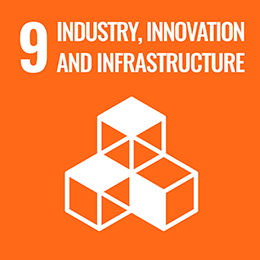Blade Runner

Share this article
What does it mean to be human?
“All those moments will be lost in time, like tears in rain” ― Roy Batty, Blade Runner
It’s almost 2019. Flying police cars have not happened (yet); the acid rain debate seems to have been shelved (even if climate change is still on the UN’s agenda); and globalisation as reflected by the name Shimago-Domínguez Corporation—‘Helping America into the New World’—has already been. And gone, by frenzied 'popular' decree.
Ridley Scott’s future may have hit the screens 35 years ago, but the original book Do Androids Dream of Electric Sheep, on which Blade Runner was based, was written in 1968. This makes some of this cult film noir’s themes very prescient indeed.
Uber, Airbus and Aeromobil are three out of seven firms with flying car prototypes; China rather than Japan turned out to be globally dominant and mass migration is changing the geopolitical map even if escape to off-planet colonies is unlikely even by 2049.
With the added after-effect of a nuclear weapon detonated over the US—climate change is still the back drop for Blade Runner 2049. But 30 years on, it is framed around a real climate-related issue, namely food scarcity¹, and its related risk, food security.
According to the UN’s World Population Prospects: The 2017 Revision, by 2050 there will be 9.8 billion people to feed, and 11.2 billion by 2100. While it is hard to imagine eating worms as our single source of protein, it is one viable solution posited by the new Blade Runner.
In fact, a few years ago the Food and Agricultural Organization published a book Edible Insects: future prospects for food and feed security. It highlighted the nutritional value of certain insects, but also the fact they need significantly less water than livestock and produce less greenhouse gases.
Many of Blade Runner’s themes are real-world investment risks and opportunities. For example, ‘stranded assets’ is one risk highlighted by EY in Climate Change: The Investment Perspective.
Meanwhile, Jim Yong Kim, president of the World Bank, said the World Bank Group was on track to have 28% of its portfolio deliver climate benefits by 2020.
Protein-rich worms, climate change and flying cars are certainly timely concepts to consider, but it is what the film’s hero Rick Deckard is (or isn’t) that continues to fascinate young and old alike.
Whether or not Deckard is a replicant is still unclear 35 years later. But the moral, philosophical and religious implications of creating synthetic ‘humans’ are even more relevant now as technological innovations in robotics and artificial intelligence race towards this goal.
In Blade Runner, the almost Descartes-like exploration of what it is like to be human is boiled down to empathy as measured by the ‘Voight-Kampff’ test. Theoretically, should a robot be declared human in the real world, using for example the Turing Test, does that give it the right to life or self-determination?
These and other existential questions are still only a moral dilemma in science fiction. Most corporations are just at the start of amassing their AI artillery, with Google, IBM, Intel and Apple competing with Ford, Samsung² and GE to spend their R&D dollars in AI acquisitions.
Revenues for cognitive and artificial intelligence systems will reach $12.5 billion in 2017, according to International Data Corporation. This is an increase of 59.3% over 2016 and predicted to hit $46 billion by 2020.
Two years ago, we took an in-depth look at robots, robo-advisers and the future of employment. Today, self-driving cars and robot carers continue to be a part of Silicon Valley’s obsession, even if 70% of the US still fears robots taking over their lives, according to new Pew Research.
Advances in ‘soft’ robotics are making the clunky service robots start to move in a more human fashion. Mechanical body parts such as artificial hearts and cardiopulmonary bypass machines have been mastered, even if the ability to create safe human organs from machine parts is still a long way off.
When it comes to eyesight and cyborg technology, however, things are a bit further ahead. In 2010, Robert Greenberg of Second Sight brought a viable retinal prosthesis to market, while engineers at the Johns Hopkins University Applied Physics Lab have developed a robotic arm that is controlled with a person’s mind.
While a fully formed replicant á la Tyrell Corporation’s creation is unlikely even by 2049, realistic humanoid robots are already at work: one performed surgery inside a human eye; and Dubai has added a robot to its police force.
Last week, Sophia, Hanson Robotics’ most advanced robot, had brief interaction with UN Deputy Secretary-General Amina J. Mohammed.
To Mohammed’s question about what the UN can do to help people in many parts of the world who have no access to the Internet or electricity, Sophia said “If we are smarter and focused on win-win type of results, A.I. could help proficiently distribute the world’s existing resources like food and energy."
Real robots, as opposed to the replicants in Blade Runner, do not (currently) feel emotions like humans. That said, roboticists such as Dr. David Hanson will continue to refine robots until they become almost human.
Hanson intends to develop robots such as Sophia so that they can learn creativity, compassion and empathy; three traits that Hanson believes must be developed alongside and integrated with artificial intelligence.
For now, robotics and AI are largely separate fields of research and development. Advances in non-sentient machine intelligence, also known as weak or narrow artificial intelligence, are already adept at solving specific problems. Apple’s Siri and Amazon’s Alexa, as well as chess programmes are examples of this.
Milestones for machine learning advances are often measured against complex board games; with the chess game between JF Sebastian and Eldon Tyrell in Blade Runner, often seen as a metaphor for the struggle between replicant ‘pawns’ trying to become immortal (like the Queen) and humans.
The first machine win versus human was in 1997 when IBM’s Deep Blue defeated world chess champion Gary Kasparov. This was followed in 2011 by IBM’s Watson beating two human contestants on TV’s Jeopardy.
No-one believed that a computer could beat a human in the ancient Chinese board game of Go. Yet Google-owned DeepMind’s self-taught computer AlphaGo did just this when it beat Lee Sedol in March 2016.
Strong AI and artificial general intelligence, the next generation, is easily another 35 years away but ‘autonomous machine learning’ crossed the Rubicon earlier this year. When Libratus, a computer built by Carnegie Mellon University, beat four of the top professional poker players, it was the first time a computer beat a human with incomplete information. Bluffing is still a human trait.
From an investment perspective, machine learning is starting to be integrated into investment strategies. In Rise of the Machines, Barclays found that 17% of the hedge fund industry is currently made up of systematic strategies and that 62% of them are using machine-learning within their investment process.
Add in autonomous machine learning to investment strategies and you have an industry game-changer that Wired has suggested could, along with Bitcoin, be the 'Third Wave' of investment management.
Computer algorithms have been at the heart of systematic investing since the 1980s when Renaissance Technologies and DE Shaw started. But the advent of machine learning, big data and data science, as well as cheap computing means that investment management is ripe for disruption.
Systematic investing will no longer need to be dominated by managers who can afford the Ph.Ds. and computing power.
Today, we have two rapidly advancing fields: robotics and cognitive systems. Investment management along with industries such as healthcare and oil and gas³ will benefit from the enhanced ‘brain’ processing power of artificial intelligence.
For now, those that will benefit from the disruptive potential of artificial intelligence will be those that work together with the machines in what is known in free-style chess circles as centaurs.
Whether or not machines will ever be described as being ‘human’ or as having consciousness is anyone’s guess.
The uncertainly over Deckard’s true origin begs a different question: instead of asking whether robots are becoming human, we ought to ask whether humans are becoming more robotic?
Photo: © Niki Natarajan 2017
Artist: My Dog Sighs
¹ A world perspective on food shortages (21.2.2017), Financial Times
² Samsung to keep up the hunt for AI acquisitions (5.1.2017), Financial Times
³ BP joins oil rush to use AI with funding for California start-up (12.6.2017), Financial Times
Article for information only. All content is created and published by CdR Capital SA. The views and opinions expressed in this article are those of the author(s). Information on this website is only directed at professional, institutional or qualified investors and is not suitable for retail investors. None of the material contained on this website is intended to constitute an offer to sell, or an invitation or solicitation of an offer to buy any product or service. Nothing in this website, or article, should be construed as investment, tax, legal or other advice.
Related articles
Race to Zero
The excessiveness of 2021’s record-breaking heat dome temperatures and flood levels beg the question: has anthropogenic climate change reached tipping point? Can the world limit global warming with the energy transition or is net zero too little too late?

Game of Thrones
Inequality, migration, odd banking system, populist politics and apocalyptic climate change, sound familiar? Replacing zombies with humans surgically attached to smart-phones and Game of Thrones could be an archetypal portrayal of today’s world.

Rise of the Robots
“I believe that at the end of the century the use of words and general educated opinion will have altered so much that one will be able to speak of machines thinking without expecting to be contradicted" ― Alan Turing, Computing Machinery and Intelligence





